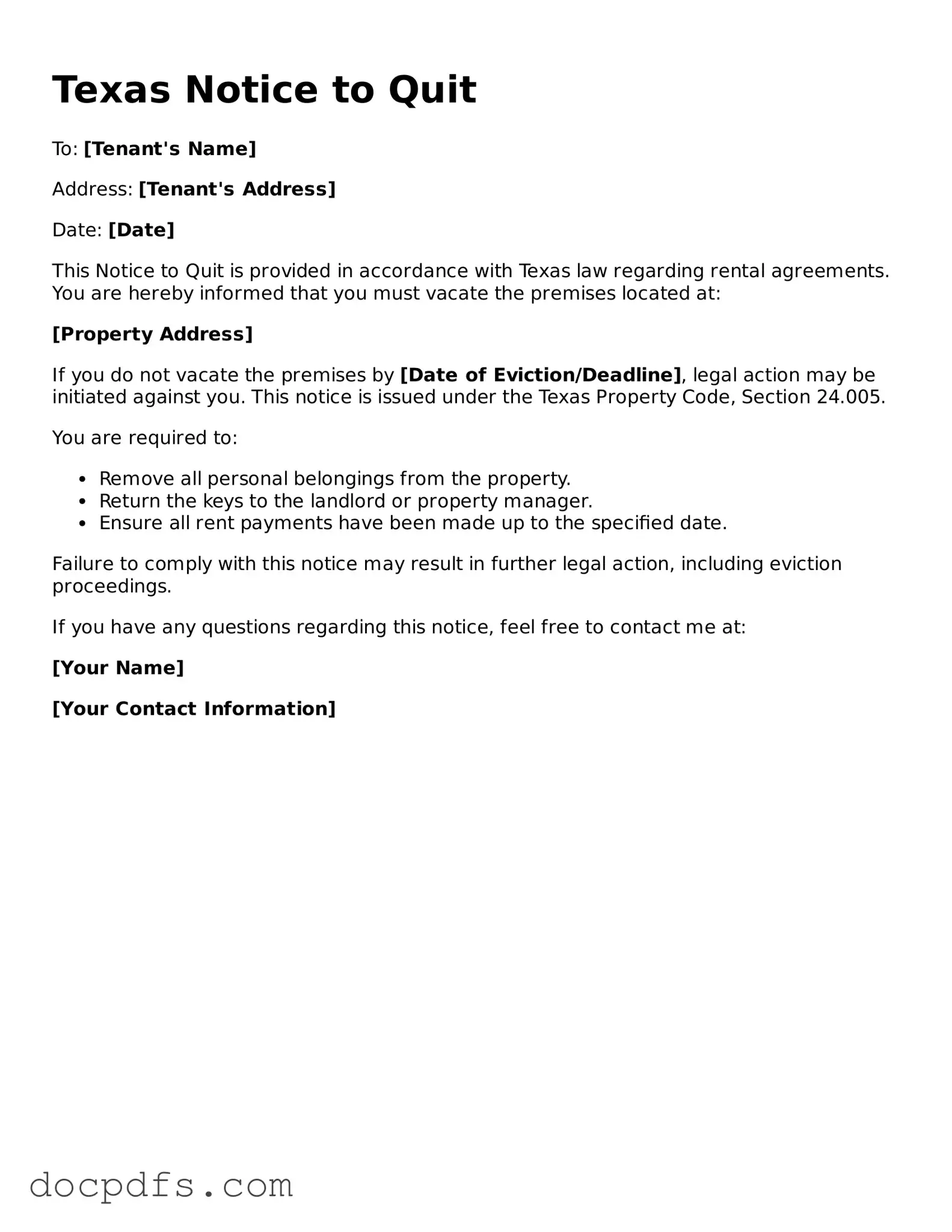The Texas Notice to Quit form is a crucial document in the landlord-tenant relationship, serving as a formal request for tenants to vacate a rental property. This form is typically issued when a tenant has violated the terms of their lease agreement, such as failing to pay rent or engaging in disruptive behavior. It outlines the specific reasons for the eviction and provides a timeline for the tenant to respond or vacate the premises. In Texas, landlords must adhere to certain legal requirements when issuing this notice, ensuring that tenants are given adequate time to address the issues or prepare for relocation. The form also includes essential information such as the date of issuance, the tenant's name, and the property address. Understanding the nuances of this document is vital for both landlords and tenants, as it sets the stage for potential legal proceedings and helps ensure that the eviction process is conducted fairly and in accordance with state laws.
